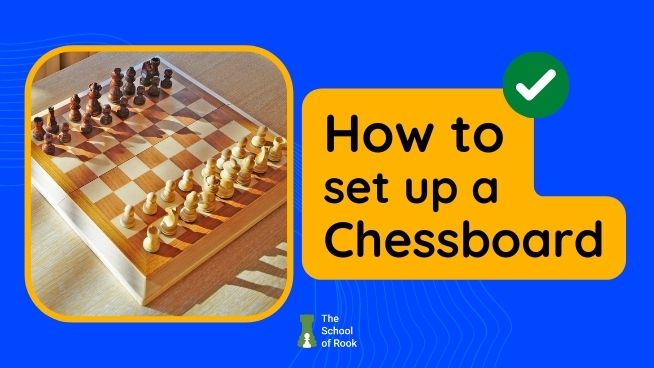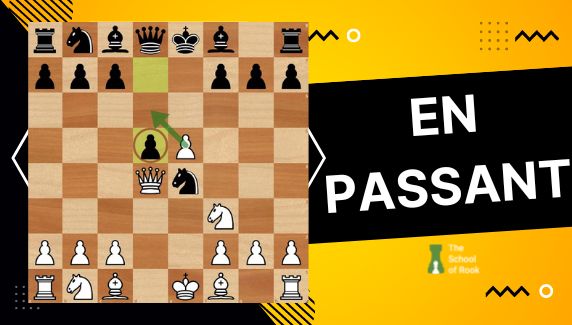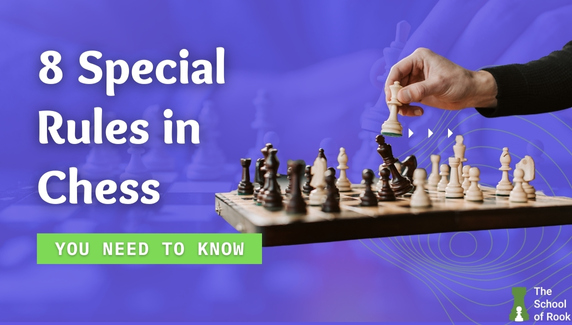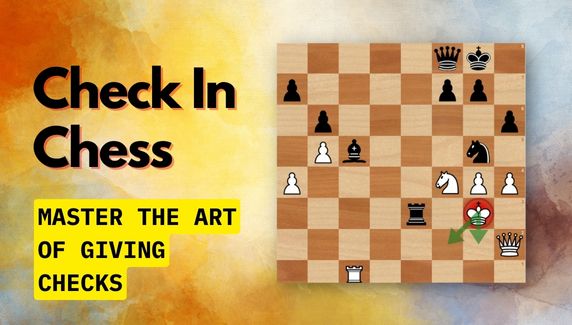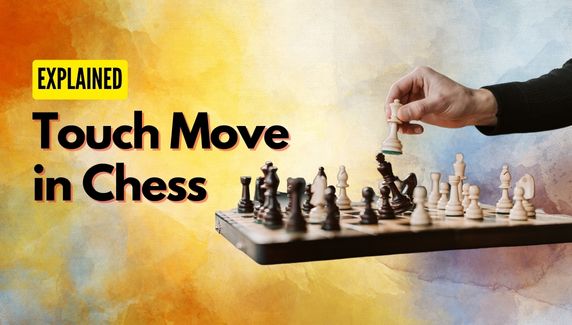
The touch move in chess is the most basic rule followed in all chess tournaments.
FIDE, the governing body of international chess, states that if a player touches a piece intentionally when it’s their turn to play, they must move it.
However, there are specific scenarios you need to be aware of where the touch move rule can get a bit tricky.
Read to know:
- What is the touch move rule?
- The touch move rule while castling and pawn promotion.
- Why is there a touch move rule?
- Touch move example
- Is there a touch move rule in online games
What is the touch move rule in chess?
The touch move is a special rule in chess that states that a player, whose turn it is to play, must move a piece they touch. This is if the piece has a legal place to move.
In simple terms, if you touch a piece when it’s your turn to play, you must move it.
The touch move rule is also known as touch-to-play. FIDE enforces this rule in all over-the-board formats.
Touch move rule scenarios

Here are common touch move scenarios in chess:
Touch move in Castling
When you’re castling, you must touch the king first. If you touch the rook first, you’ll need to move the rook independently, and castling will be void.
Since moving a rook is a legal move, you cannot change into castling by moving the king later over the rook.
Remember, castling is a king move. That’s why you must move the king first and then the rook for the move to be considered castling.
Here’s how to castle correctly:
- Touch the king and move it to two squares on your right for the king-side castle. For the queen-side castle, move the king two squares to your left.
- Once you release the king, move your rook over the king and place the rook beside the king.
Touch move in Pawn Promotion
When you’re promoting your pawn on the last rank, you must follow the touch move rule:
- Move the pawn to the last rank.
- Grab a minor or major piece you want for pawn promotion.
- Remove the pawn and replace it with the promoted piece.
- Press the clock since the move is now complete.
Many players first grab a piece, place it on the last rank, and then remove the pawn from the second last rank. This is, in fact, the wrong way to promote a pawn.
Touch move when you touch your opponent’s piece
The touch move also extends to your opponent’s pieces. If you touch your opponent’s piece when it’s your turn to play, you must capture the piece if it’s a legal move.
This is unless you say “adjust” before touching the piece. If you wish to adjust the piece on board, say “I adjust” or “adjust” before adjusting it.
However, it’s best not to touch your opponent’s pieces as it might disturb them.
Your opponent can also make a claim with the arbiter if you’re touching their pieces too often. So you should only touch your opponent’s piece when it’s not placed correctly on its square.
Touch move when you touch multiple pieces of yours
If you touch more than one piece of your own, you must move the first piece you touched.
The same rule applies to your opponent’s pieces. If you touch one or more of your opponent’s pieces, you must capture the first move you touched.
Touch move when you touch multiple pieces of both colors
What if you touch multiple pieces of your and your opponent’s?
You’ll then need to move the first piece you touched and use it to capture the first piece you touched of your opponent’s. If it’s illegal, you must capture the first piece that can be captured legally.
If it’s not clear if you have touched your or your opponent’s pieces, you can move your piece.
What should you do when your opponent doesn’t follow the touch move rule?
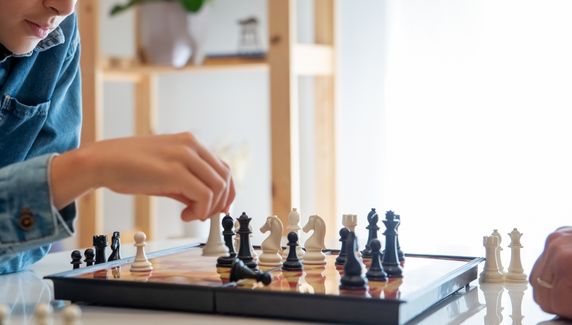
You should first request your opponent to follow the touch move rule, and if they defy the rule by moving another piece, you should raise your hand and call the arbiter.
Explain your case to the arbiter calmly. After talking to your opponent, the arbiter will likely ask your opponent to follow the touch move rule.
Your opponent will have to take back their move and now move the piece they first touched.
Meanwhile, make sure you don’t touch any pieces or make a move until the arbiter arrives. If you touch or move a piece, you forfeit the right to claim against your opponent’s violation, as per Article 4.8, FIDE Laws of Chess.
Why is there a touch move rule?
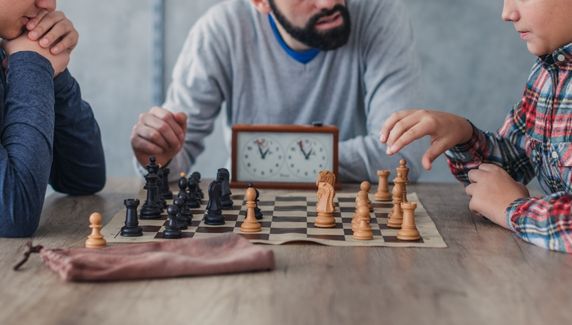
The touch move rule is implemented to limit multiple moves and takebacks on board. If a player touches a piece and moves it, only to take it back and move another piece, it will lead to confusion.
There are many ways players can take undue advantage if there’s no touch move rule.
For instance, players can also use the board to demo their future moves and then move the pieces back to their original position once they have calculated their next move.
That’s why the touch move rule was implemented as an anti-cheating measure.
Touch move example
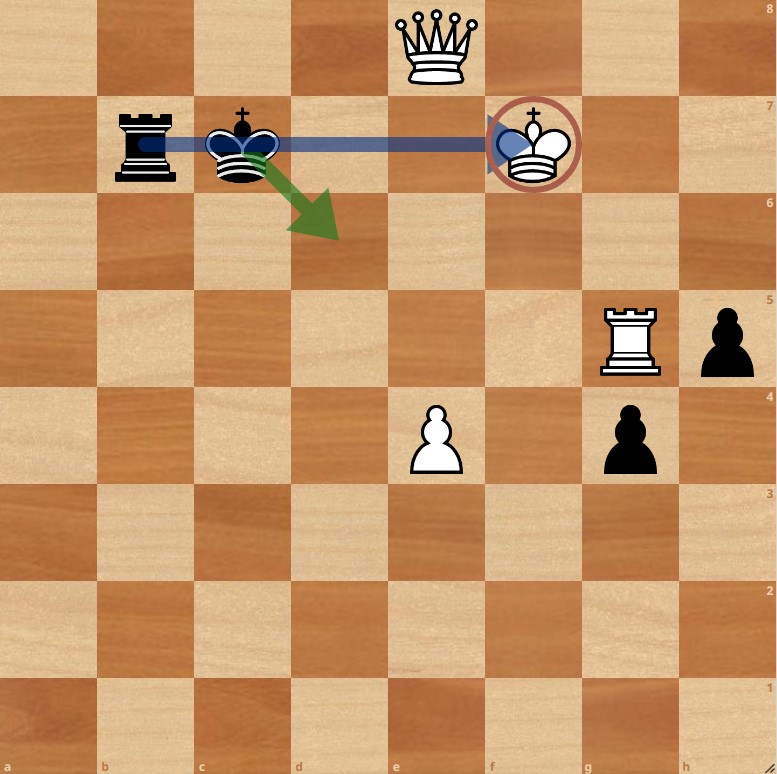
Let’s look at this game played between Anatoly Karpov and Alexander Chernin in 1992.
Black played Kd6+, giving a discovered check. Karpov was running short on time and played Qe6+, an illegal move, instead of moving his King.
Now that he has already touched his Queen, he had to move it to e7 to stop the check. Karpov lost his Queen and the game after black played Rxe7+.
Is there a touch move rule in online games?
No, online games don’t follow the touch move. Players can pick and drop a piece back to its original position and then pick another piece to play.
The touch move rule is only applicable in the OTB matches.
Related Post
Key takeaways: Touch move rule in chess
- Once your hand leaves a piece, the move is complete. You can’t take the piece back to its original position or move it to the place you wanted it to move in the first place.
- If you want to adjust an incorrectly placed piece on the board, say “I adjust” while moving it in its place. If you don’t say “I adjust” or simply “adjust” while moving the piece, you’ll be forced to move that piece.
- Adjusting pieces when it’s your turn to play is good etiquette. Otherwise, it interferes with your opponent’s game.
- When castling, move the king first, followed by the rook.
- If you touch your opponent’s piece when it’s your turn to play, you’ll need to capture it.


